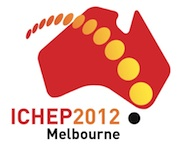Speaker
Dr
Paul Soler Jermyn
(University of Glasgow (UK))
Description
The International Muon Ionization Cooling Experiment (MICE) will carry out a systematic investigation of ionization cooling of a muon beam, for the future Neutrino Factory and the Muon Collider. As the emittance measurement will be done on a particle-by-particle basis, a sophisticated beam instrumentation is needed to measure both particle coordinates and timing vs RF in a harsh environment due to high particle rates, fringe magnetic fields and RF backgrounds. A PID system, based on three time-of-flight stations (with resolutions up to 50-60 ps), two Aerogel Cerenkov counters and a KLOE-like calorimeter (KL) has been constructed and has allowed the commissioning of the MICE muon beamline in 2010. It will be soon followed by an Electron Muon Ranger to determine the muon range at the apparatus downstream end and later by two tracker detectors to trace incoming particles inside two high-field superconducting solenoids. Detector performances will be shown and their use for the beamline characterization fully illustrated.
Financial Support Justification for Early-Stage Researchers
This abstract is being submitted by the chair of the MICE speakers bureau. If accepted an early-stage member of the collaboration will be selected for the mission. It would be surprising from current experience if he/she were not be in need of support for the expensive trip and sejour.
Authors
Prof.
Kenneth Long
(Imperial College London)
Dr
Paul Soler Jermyn
(University of Glasgow (UK))
Prof.
Vittorio Palladino
(Universita e INFN (IT))
